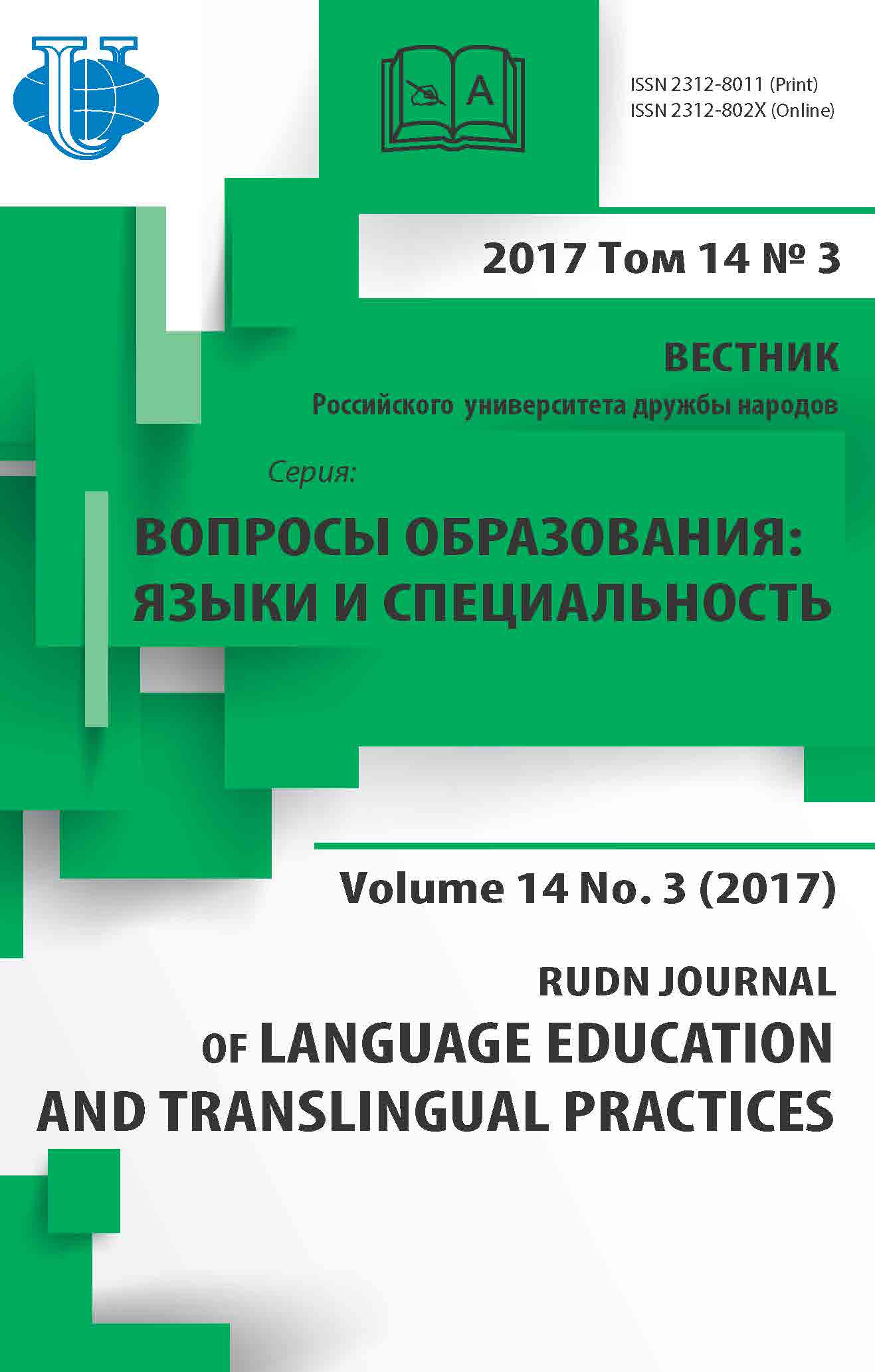CLASSIFICATION AND TYPOLOGY OF BILINGUALISM
- Authors: Bulgarova BA1, Bragina MA1, Novoselova NV1, Zolotykh EA1
-
Affiliations:
- Peoples’ Friendship University of Russia (RUDN University)
- Issue: Vol 14, No 3 (2017)
- Pages: 384-392
- Section: LANGUAGES IN CONTACT: THEORY AND PRACTICE
- URL: https://journals.rudn.ru/polylinguality/article/view/17053
- DOI: https://doi.org/10.22363/2312-8011-2017-14-3-384-392
Cite item
Full Text
Abstract
This article covers contemporary achievements in the sphere of bilingualism, deepens the understanding of such phenomena as diglossia and language interference. Aim. We’ve tried to systematize the types of bilingualism based on different methods of classification. Matherials and Methods. Systems’ comparative and typological analysis. Results. The conducted analyses showed that bilingualism (as a phenomenon) has a number of common and specific features depending on many social indexes. We’ve compared the views of foreign and Russian scientists on the problem. The result is more exact understanding of bilingualism linguistic model. Conclusions. Mass bilingualism has become the norm of contemporary society
About the authors
B A Bulgarova
Peoples’ Friendship University of Russia (RUDN University)
Author for correspondence.
Email: bulg_Bella@mail.ru
Bulgarova Bella Akhmedovna is PhD in Philology at the Department of the Russian language No. 1 within the Faculty of Russian language, RUDN University.
Miklukho-Maklaya str., 6, Moscow, Russia, 117198M A Bragina
Peoples’ Friendship University of Russia (RUDN University)
Email: mbragina@inbox.ru
Bragina Marina Alexandrovna is PhD in Philology, the Head of the Department of the Russian language No. 1 within the Faculty of Russian language, RUDN University.
Miklukho-Maklaya str., 6, Moscow, Russia, 117198N V Novoselova
Peoples’ Friendship University of Russia (RUDN University)
Email: natino69@yandex.ru
Novoselova Natalia Victorovna is a senior lecturer at the Department of the Russian language No. 1 within the Faculty of Russian language, RUDN University.
Miklukho-Maklaya str., 6, Moscow, Russia, 117198E A Zolotykh
Peoples’ Friendship University of Russia (RUDN University)
Email: ek.zolotykh@gmail.com
Zolotykh Ekaterina Arkadievna is PhD in Pedagogy, associate professor at the Department of Russian Language and Intercultural Communication, RUDN University.
Miklukho-Maklaya str., 6, Moscow, Russia, 117198References
- Neliubin L.L. Tolkovyi perevodcheskii slovar’ [Explanatory Translation Dictionary]. Moscow: Flinta: Nauka, 2003. 320 s. (in Russian)
- Min’iar-Beloruchev R.K. Kak stat’ perevodchikom? [How to Become a Translator?]. Moscow: Gotika, 1999. 176 s. (in Russian)
- Shveitser A.D. Lingvisticheskii entsiklopedicheskii slovar’ [Linguistic Encyclopedic Dictionary]. Moscow, 1990. S. 481—482. (in Russian)
- Vainraikh U. Odnoiazychie i mnogoiazychie. Novoe v lingvistike [Monolingualism and Multilingualism]. Moscow, 1972. Vol. 6. S. 25—60. (in Russian)
- Rozentsveig V.Iu. Iazykovye kontakty [Language Contacts]. Leningrad: Nauka Publ., 1972. 80 s. (in Russian)
- Vereshchagin E.M. Voprosy teorii rechi i metodiki prepodavaniia inostrannykh iazykov [Problems in the Theory of Speechand Methods of Teaching Foreign Languages]. Moscow, 1969. S. 27—31. (in Russian)
- Vereshchagin E.M. Psikhologicheskaia i metodicheskaia kharakteristika dvuiazychiia (bilingvizma) [Psychological and Metric Characteristics of Bilingualism]. Moscow, M.V. Lomonosov Moscow State University, 1969. 322 s.















